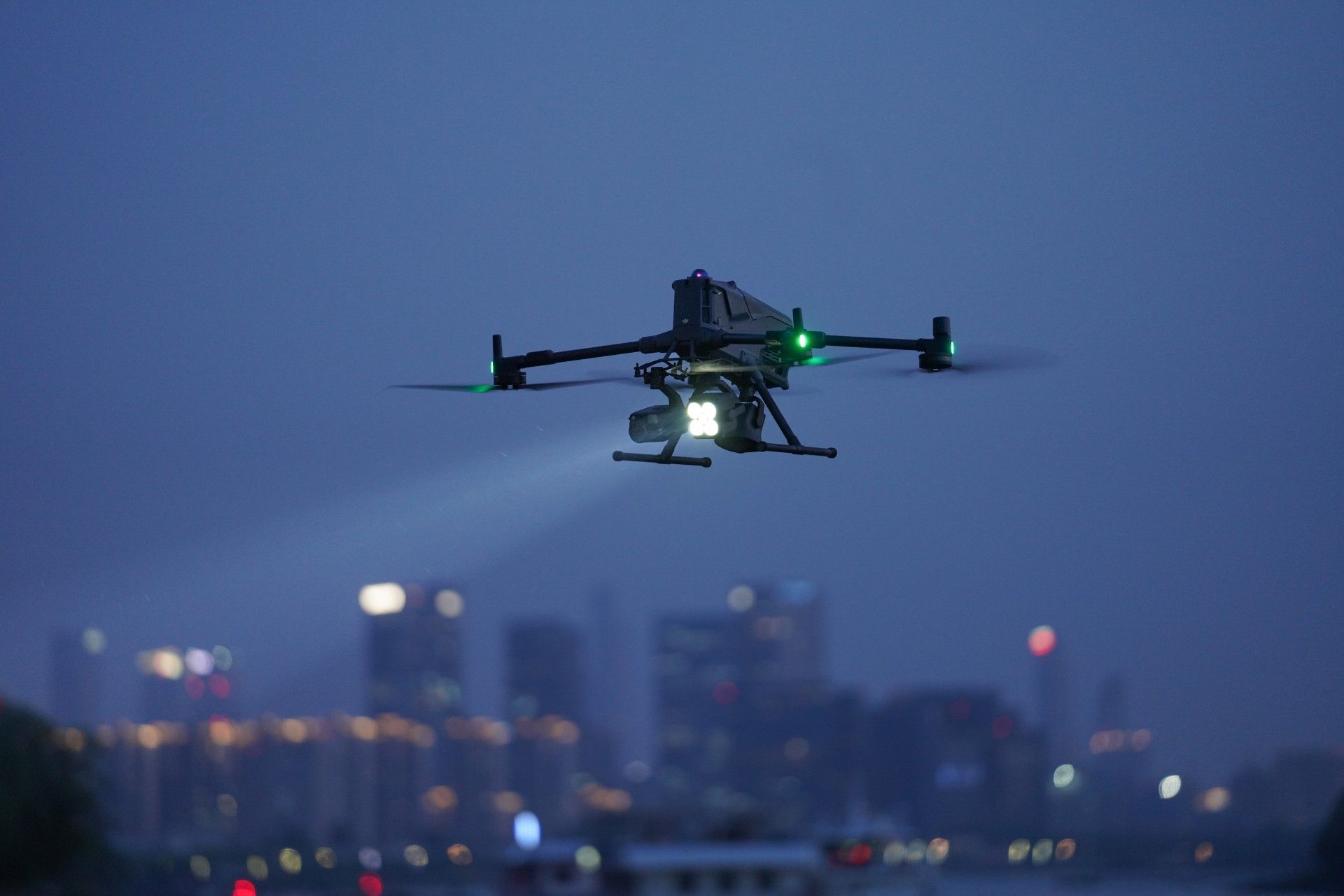How DJI drones are shaping the future of emergency response

From firegrounds to search and rescue operations, drones are becoming a vital tool for blue light services. We spoke with DJI Enterprise, the global leader in drone technology, about how its Enterprise solutions are helping UK emergency responders improve situational awareness, enhance safety, and deliver faster, more effective outcomes on the frontline.
Drones are increasingly being seen as essential frontline tools. How are emergency services currently using DJI technology in operations like firefighting, search and rescue, or law enforcement?
Across the UK and worldwide, DJI drones are now embedded into daily operations. Fire services use them for real-time fireground mapping and thermal imaging to track hotspots. Search and rescue teams deploy drones to cover large areas quickly, even in poor visibility, reducing the time taken to locate missing persons.
Police and other agencies use drones to enhance situational awareness during major incidents, support evidence gathering, and improve responder safety in complex or hazardous environments, all in a way that is faster, safer and more cost-efficient than traditional methods.
Situational awareness is often the difference between success and failure in critical incidents. How does DJI’s technology enhance decision-making for incident commanders?
DJI drones stream live aerial imagery to command teams, providing a clear overview of incidents as they unfold. Thermal and zoom payloads allow commanders to see through smoke, darkness, or from stand-off distances. Combined with software platforms like FlightHub 2, decision-makers gain a shared operational picture that improves coordination, speeds up response times, and supports safer tactical choices.
Safety and reliability are key in high-stakes environments. How does DJI ensure its systems are trusted to perform in the most demanding conditions?
DJI Enterprise platforms are designed with redundancy, robust build quality, and advanced obstacle sensing to ensure reliability in the field. They undergo rigorous testing to meet international safety standards and can be operated in challenging weather conditions.
Features like encrypted data transmission and fail-safe return-to-home functions give operators confidence that drones will perform when lives are on the line.
Beyond the drones themselves, what innovations in software, data or integration are helping services get the most from DJI platforms?
We are advancing intelligent object detection, hybrid payloads, automated mapping workflows, and cloud-based mission management through tools like FlightHub 2. Integration with third-party platforms also enables services to connect drone data directly into their command and control systems.
These innovations reduce manual workload, make insights accessible in real time, and allow drones to become a fully embedded part of the digital toolkit for emergency responders.
Adoption can be a challenge when introducing new technology. How does DJI, working with Midwich and there network of resellers, support emergency services in training, deployment and ongoing use of drones?
Through Midwich and its reseller network, DJI offers a complete lifecycle approach: from initial consultation and tailored training, through to deployment support and ongoing aftercare. We work closely with services to build internal capability, ensure compliance with regulations, and provide updates and technical support as systems evolve.
This ensures that drones are not just delivered but successfully embedded into day-to-day emergency response.
Looking at the UK specifically, how do you see the use of drones evolving across blue light services in the next few years?
We anticipate growth in three areas: wider fleet adoption, more integration with command systems, and increasing use of automation. Docked drone solutions will enable rapid response without the need for a pilot on site, while AI-enhanced analytics will support quicker decision-making.
As regulations continue to evolve, UK services will move closer to routine use of drones as standard frontline assets.
Cost is always a consideration. How can investing in drone technology provide long-term value and efficiency for emergency services?
Drones reduce the need for costly helicopter deployments, accelerate time-critical tasks, and improve the efficiency of resource allocation. By minimising risk to personnel, they also help reduce injury-related costs.
Over time, a drone programme pays for itself by providing faster, safer, and more cost-effective outcomes for communities and the services that protect them.
What can visitors to The Emergency Tech Show expect to see and experience from DJI on site?
Visitors will see our latest DJI Enterprise platforms in action, including solutions designed specifically for public safety missions. We’ll be showcasing live demonstrations, AI-enabled payloads, and software integrations that transform how data is captured and used.
It’s also an opportunity to meet our team and ask questions, and explore how drones can be tailored to the unique challenges faced by UK emergency services.
)
)
